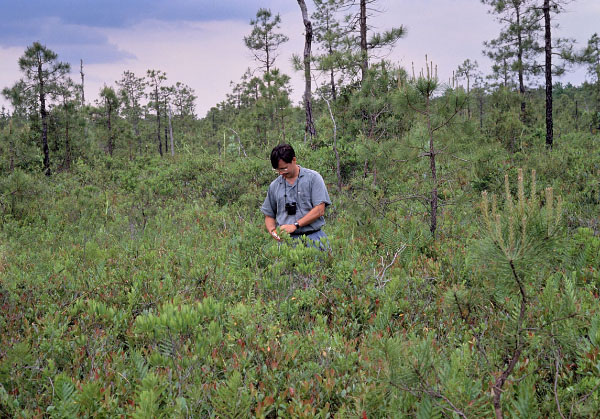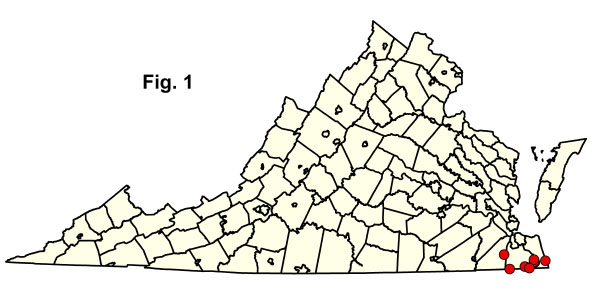

Virginia Department of Conservation and RecreationAn official website of the Commonwealth of Virginia Here's how you knowAn official websiteHere's how you know

Virginia Department of Conservation and RecreationAn official website of the Commonwealth of Virginia Here's how you knowAn official websiteHere's how you know
 Department of Conservation and Recreation
Department of Conservation and Recreation
 Table of Contents
Table of ContentsPond Pine Woodlands and Pocosins
This ecological group is characterized by coniferous, pyrophytic woodlands of saturated, oligotrophic, Coastal Plain peatlands. These communities are restricted to southeastern Virginia, eastern North Carolina, and northeastern South Carolina. Although no doubt more widespread in the pre-settlement Virginia landscape, only a few remnants of these communities are currently found in the extreme southeastern part of the state. The largest extant occurrences are in the Great Dismal Swamp National Wildlife Refuge (Cities of Suffolk and Chesapeake) and on remote peat flats beyond the range of wind-tidal flooding along the North Landing River (City of Virginia Beach) and Northwest River (City of Chesapeake). Pond Pine Woodlands and Pocosins have high biomass and consist largely of inflammable woody plants that are specially adapted to frequent, intense burning. All present-day examples in Virginia suffer to some extent from a reduction in fire frequencies or complete suppression of fires. Stand physiognomy and composition reflect responses to gradients of fire frequency and peat depth. Stands known as "high pocosins" are associated with deeper organic soils and more frequent fires; these have only scattered, stunted pond pines (Pinus serotina) emergent from nearly impenetrable evergreen shrub thickets dominated by shining fetterbush (Lyonia lucida), inkberry (Ilex glabra), Carolina laurel (Kalmia carolina), and laurel-leaf greenbrier (Smilax laurifolia). Stands associated with superficial peat and/or longer periods without fire often develop nearly closed canopies of larger pond pines, understories of red maple (Acer rubrum), sweetbay magnolia (Magnolia virginiana var. virginiana), and red bay (Persea palustris), and less dense shrub layers that contain more deciduous species. Few herbaceous species except Virginia chain fern (Anchistea virginica) thrive in pond pine woodlands.
Woodlands of pond pine over dense stands of switch cane (Arundinaria tecta) known as "canebrakes," were once common in areas of the Dismal Swamp region that had very short fire return intervals. Because of fire exclusion, these have been replaced in succession by non-riverine forests, although non-natural analogues remain in powerline rights-of-way that are maintained by mowing and herbicides.
Pond Pine Woodlands and Pocosins are floristically similar to both Peatland Atlantic White-Cedar Forests and the Mixed Evergreen Type of Non-Riverine Swamp Forest. They differ from the former in overstory dominance, greater shrub density, and association with peatlands that formerly were subject to much shorter fire return intervals. The Non-Riverine Swamp Forest (Mixed Evergreen Type) has a more diverse canopy, occupies wetter swales in sandhill or ancient dune areas, and likely varies from Pond Pine communities in peat depth and fire frequency. Communities in this group are globally rare, rapidly declining, and scarcely viable due to fragmentation and the absence of sustaining fire frequencies.
References: Dean (1969), Focazio et al . (1998), Fleming and Moorhead (1998), Frost (1995), Stevens and Patterson (1998).
 © DCR-DNH, Thomas J. Rawinski.
© DCR-DNH, Thomas J. Rawinski.

 Download a spreadsheet of compositional summary statistics (Excel) for each of the community types listed below.
Download a spreadsheet of compositional summary statistics (Excel) for each of the community types listed below.

